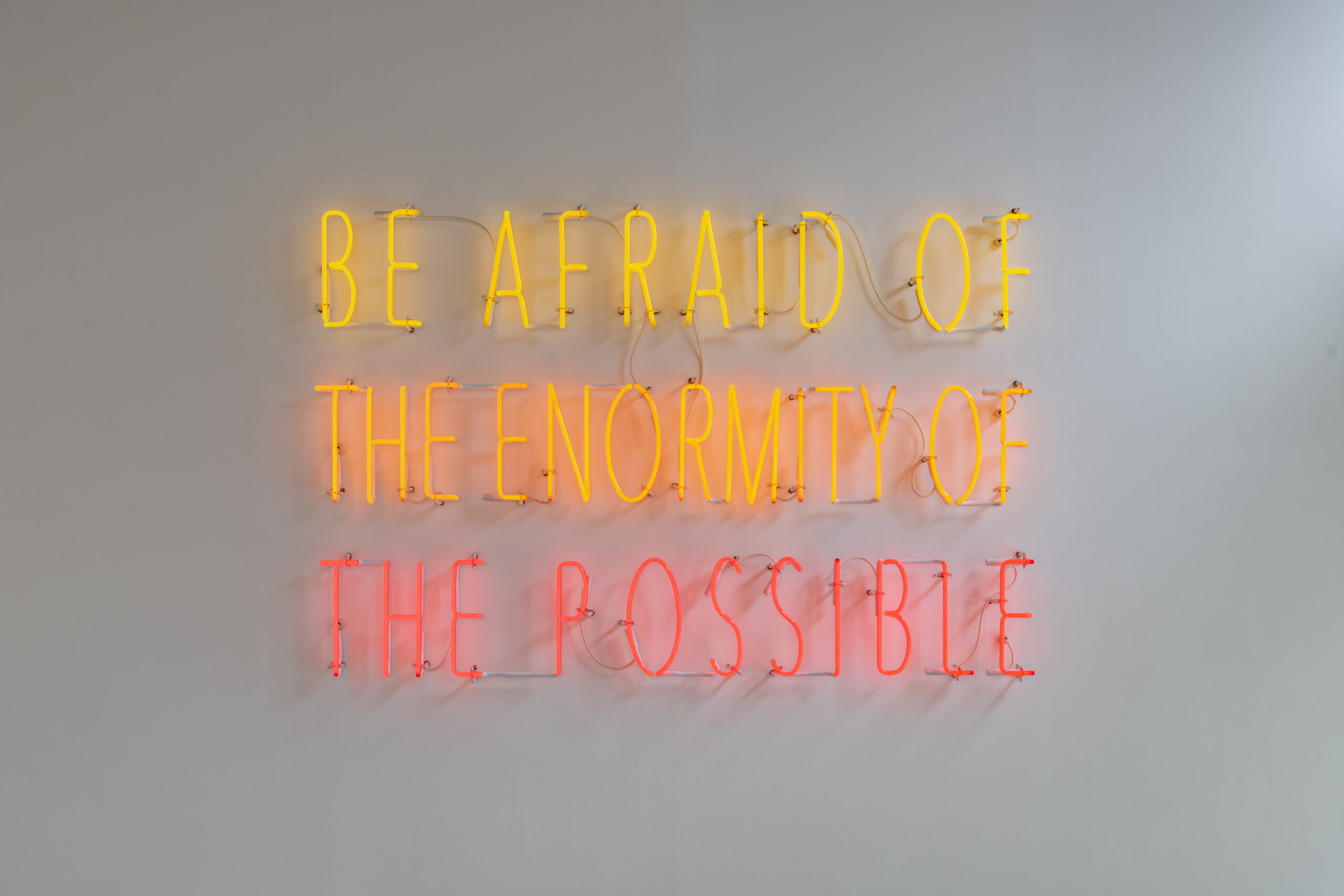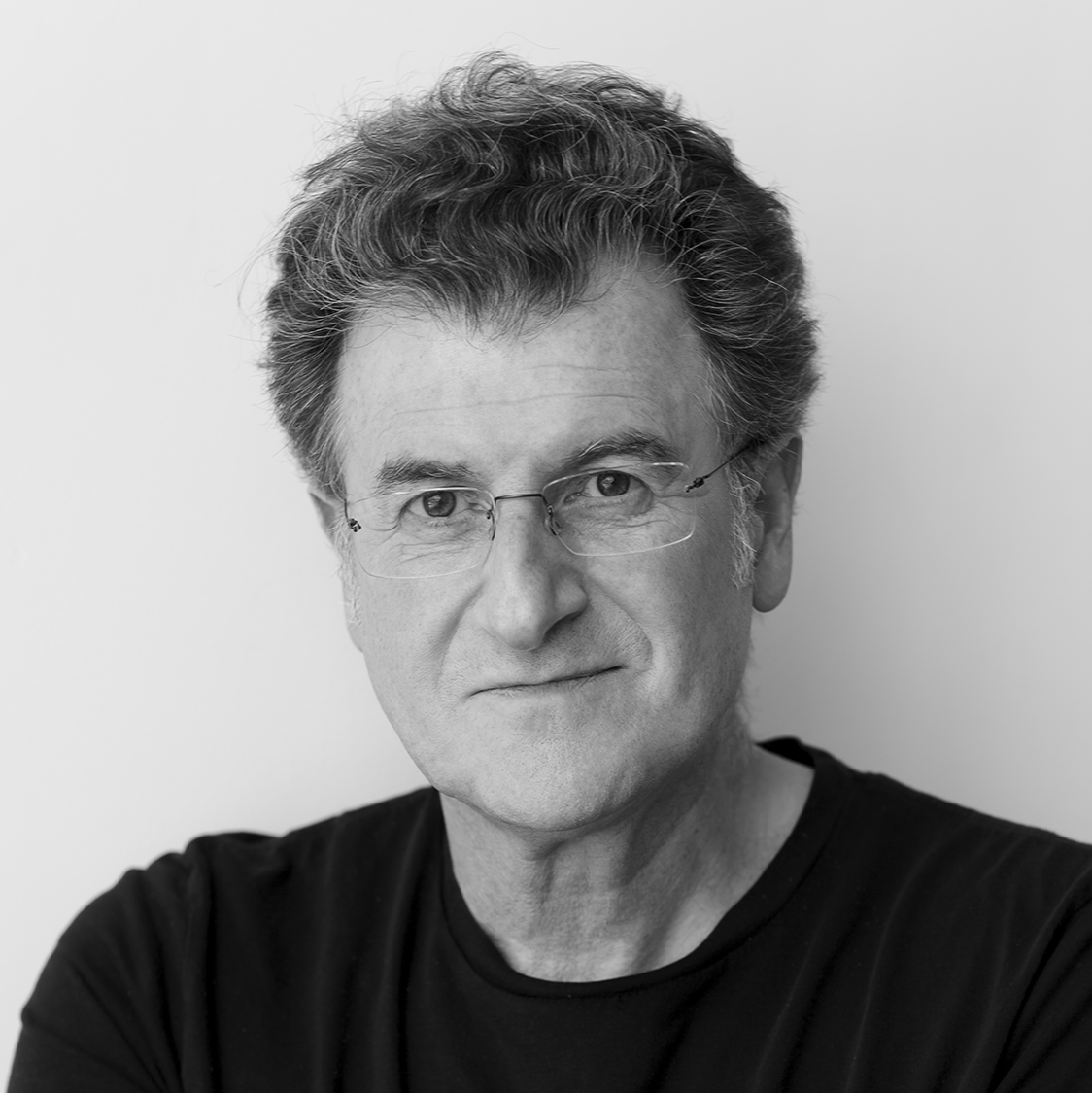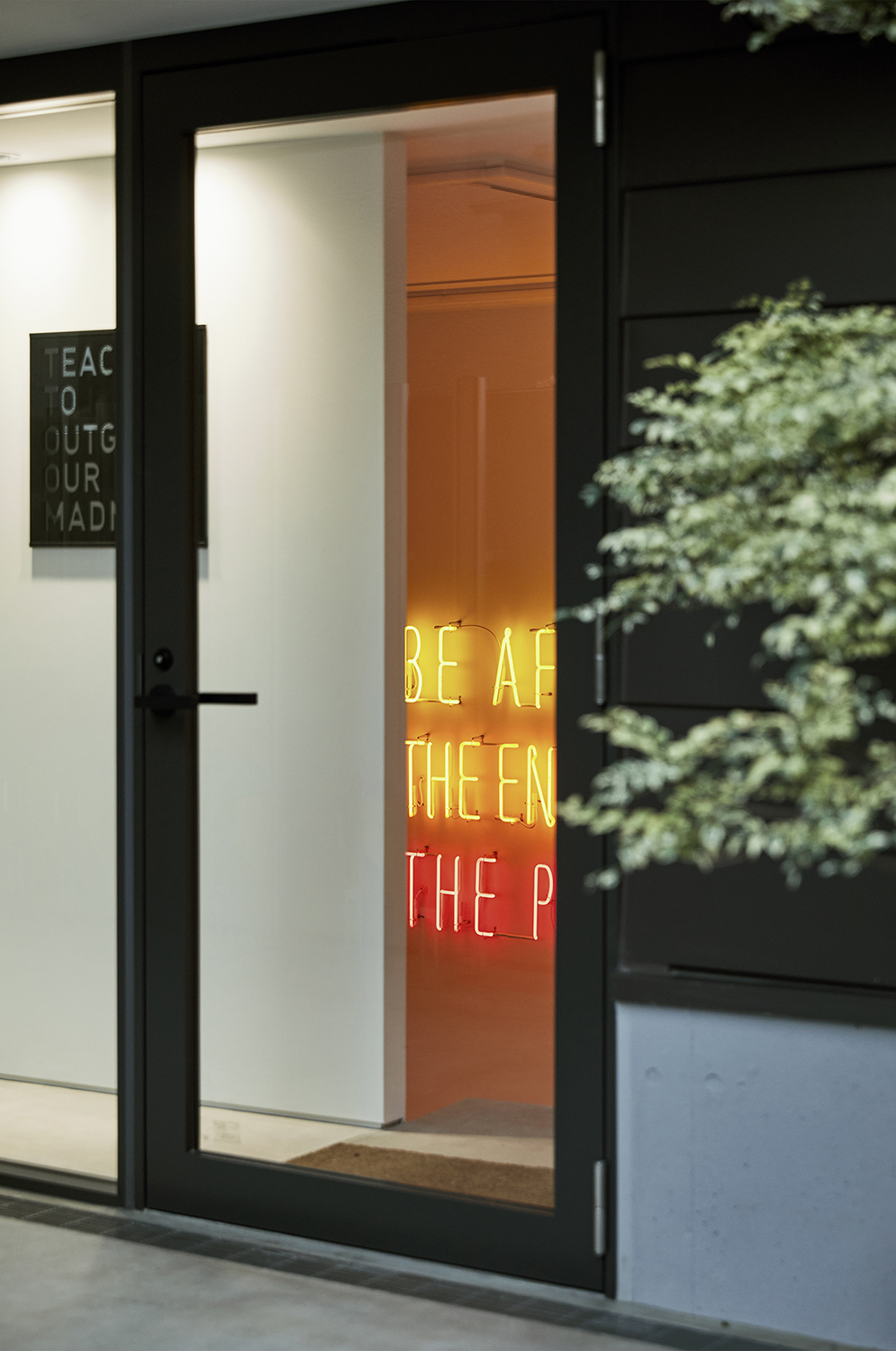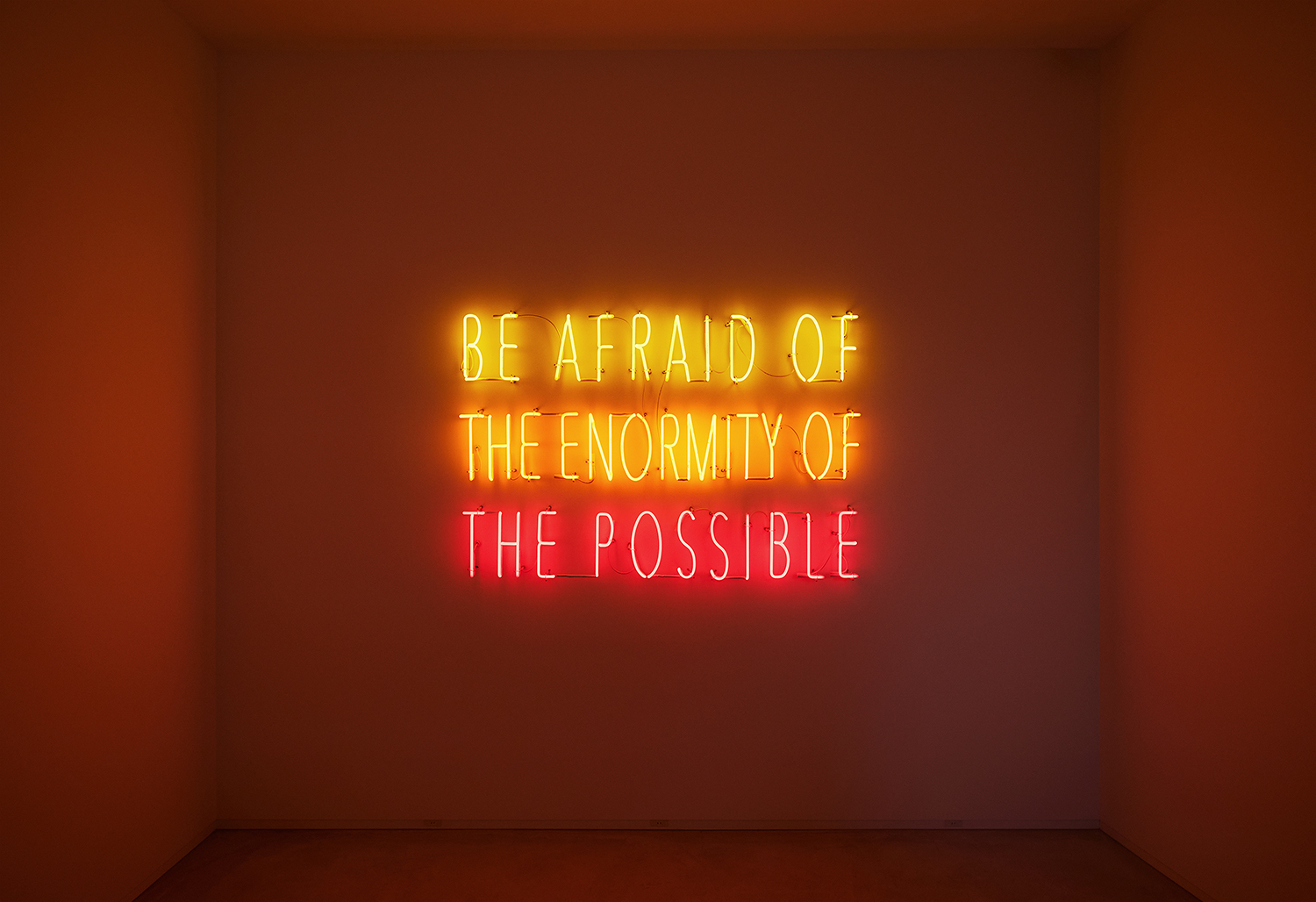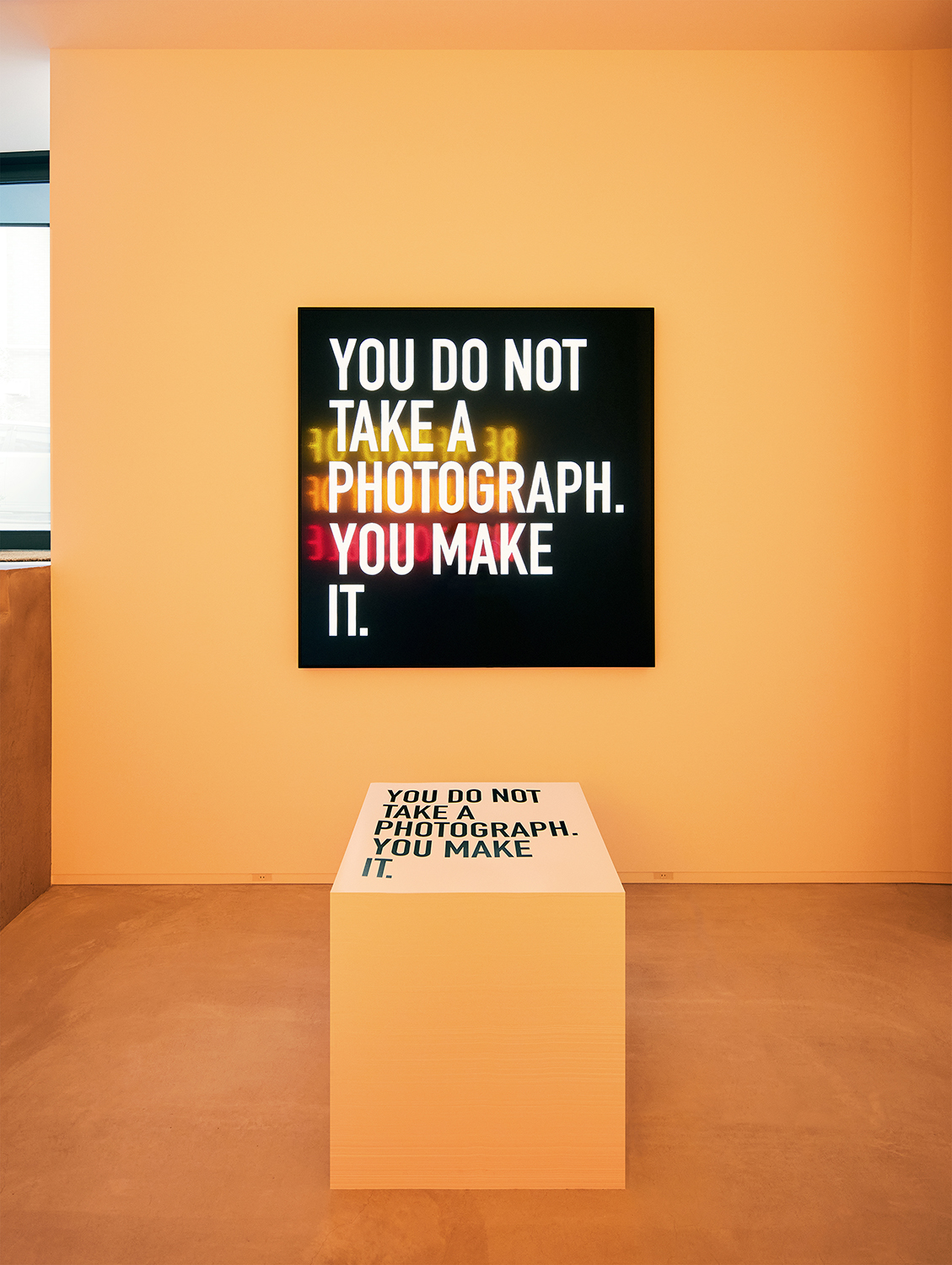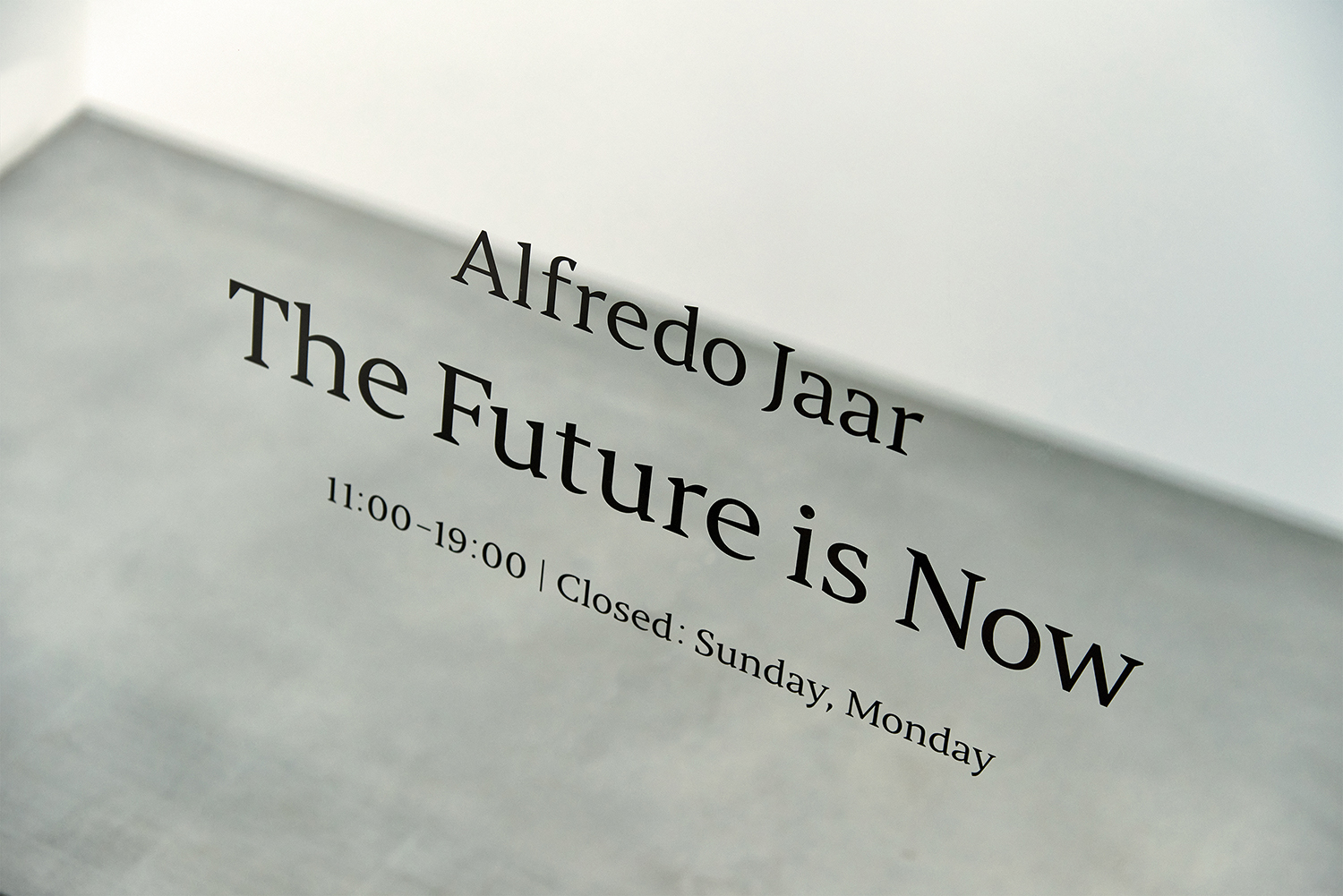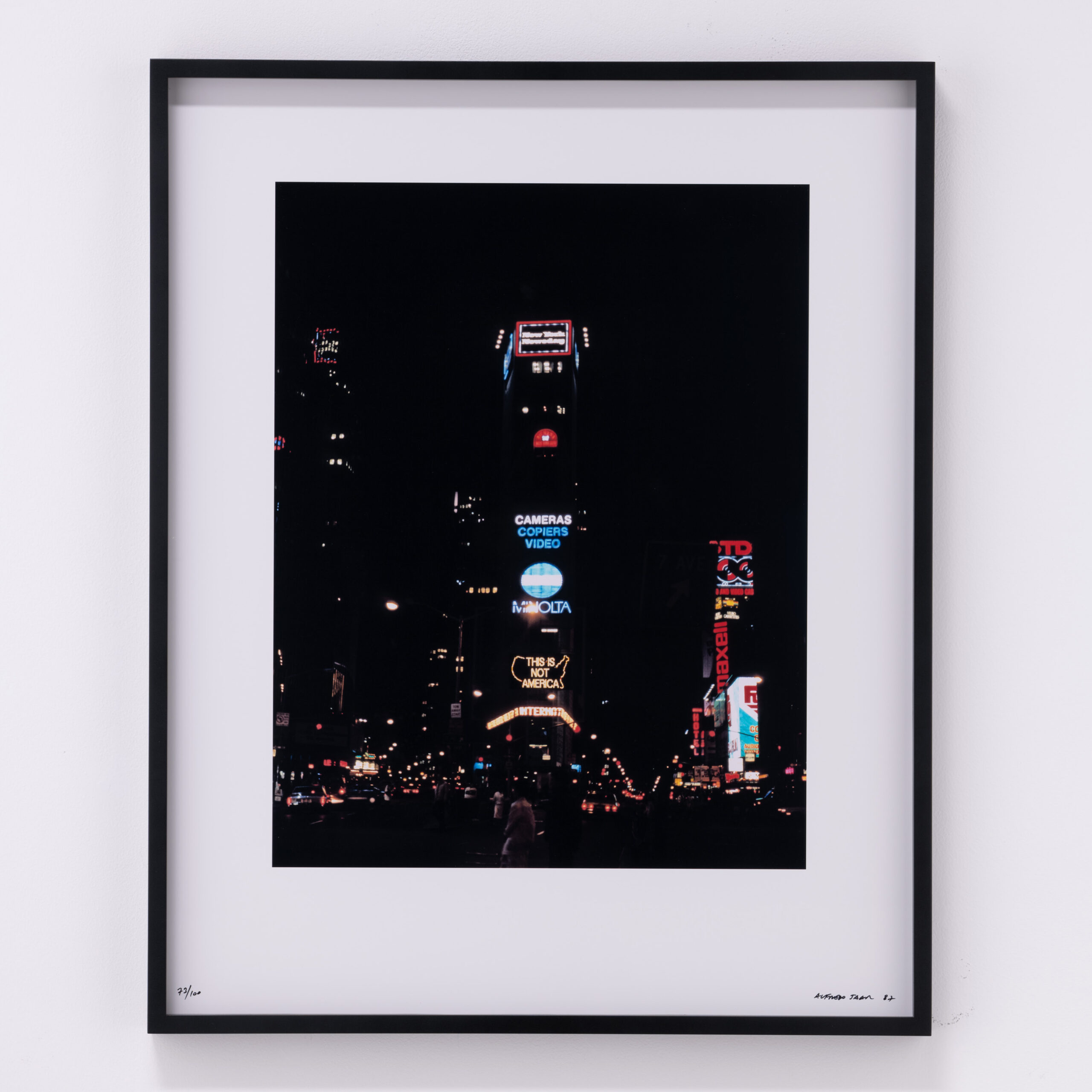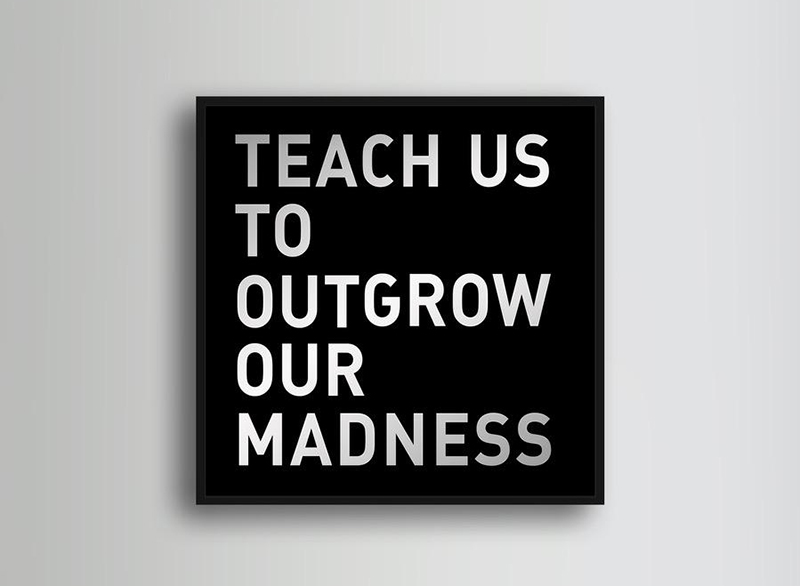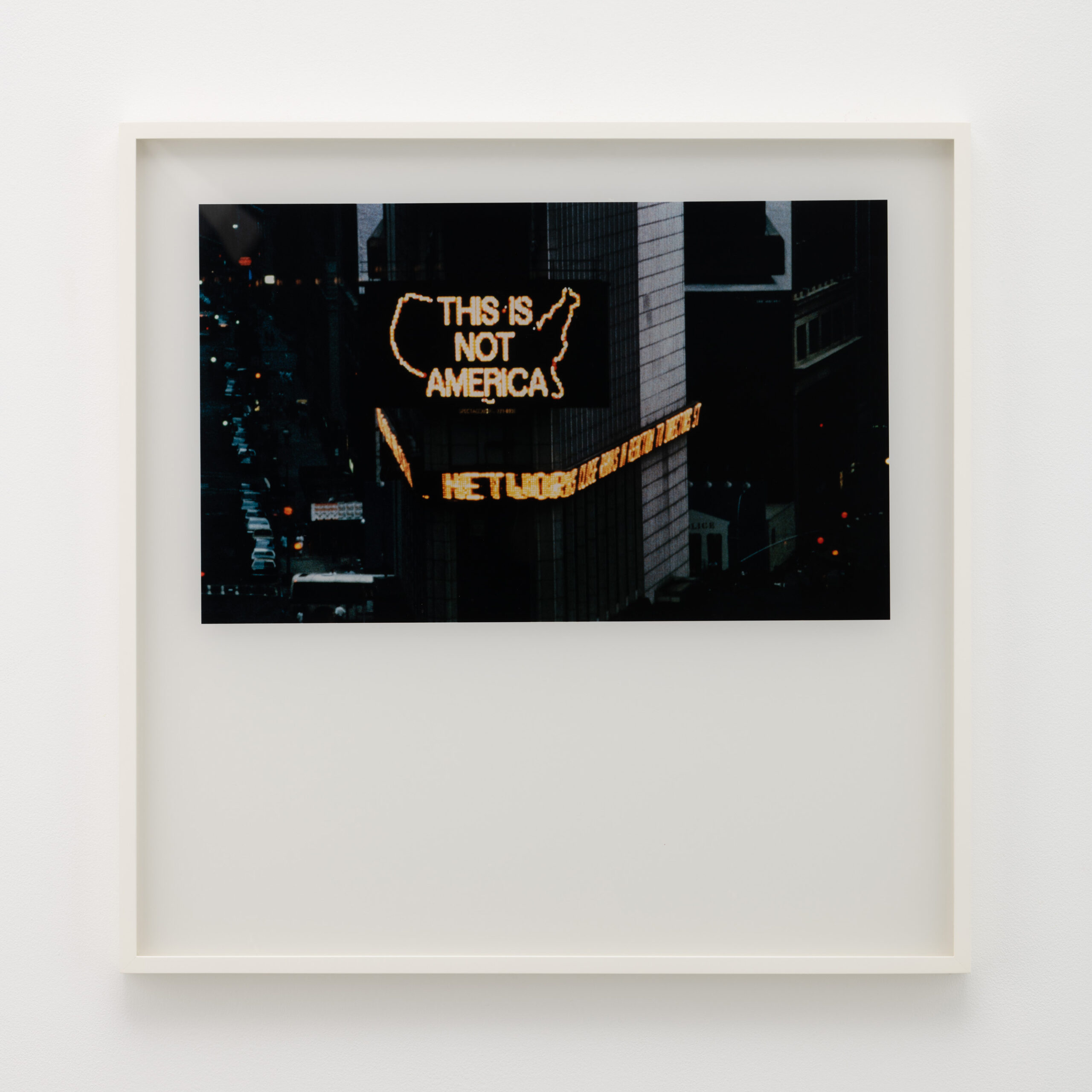
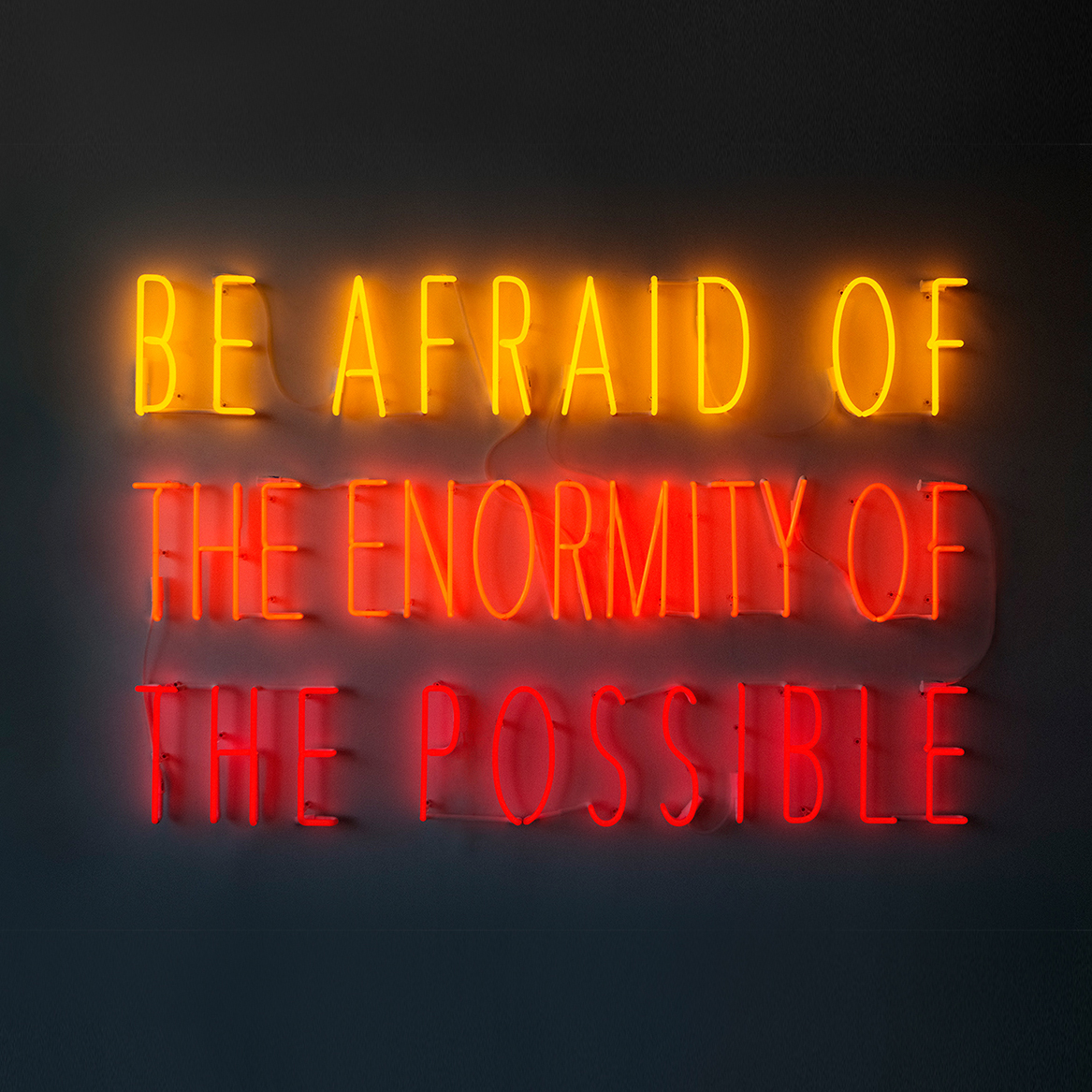
Be Afraid of the Enormity of the Possible
The work quotes a line from a poem in A Short History of Decay (1949), a collection of
essays by philosopher Emile Cioran (1911-1995). This pessimistic essay is the first book
written in French by Cioran, a Romanian, who had begun to live in Paris after World
War II. Cioran is said to be pessimistic and nihilistic, but on the other hand, he is also
said to be a man who got to the core of human existence, free from sophomoric
idealism and moralizing concepts.
This work made by the neon shines bright with bright red, orange, and yellow, colors that are often used for warning signs. Combined with the capitalized words, they throw attention and arouse interest. The work suggests the importance of the viewer’s own interpretation of the words, which may be perceived in different ways depending on the period, society, and personal interests.
- Credit
- cortesy of the artist
- Year
- 2015
- Material
- Neon
- Size
- 122×189cm


